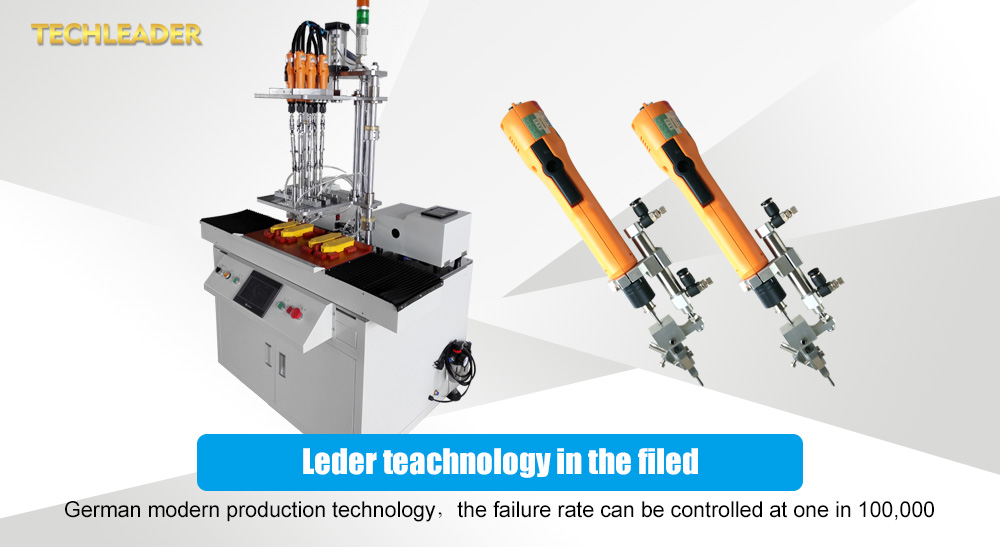Robotic screwdriving systems collaborative products and automatic screwdriving systems
The popularity of collaborative robots is steadily on the rise since they make it possible for machines and people to work closely together. They seem to have a strong appeal for various manufacturers because they are user-friendly, flexible, and need either no or little safety barriers.
There has been an increase in the number of tasks that need the attention of collaborative robots. These robots are perfect in situations where cables and all other parts have to be well-positioned. The collaborative robots make it possible for the operators to help out in the assembly’s operation, like pulling off a motherboard cable to avoid obstructing the process of screwdriving.

robotic screwdriving systems manufacturer
What is not a collaborative robot
Since it is an entirely new concept, there seem to be many misconceptions about the real meaning behind the collaborative robotic assembly. For example, there is a world of difference between cooperative processes and collaborative processes.
In a truly collaborative environment, you have an operator working on the same task (assembly) with the robot. There could be a certain level of work synergy, which involves the human holding one part. Alternatively, there could be a division of responsibilities where the human can insert the pin and have the robot drive in the screws.
It is essential to understand the meaning of collaborative in this case. As what most people refer to as a collaborative environment is not one. It is not a parallel or a sequential process whereby the robot is working on the product assembly line, and the human is not doing anything.
Most of the tools that the robots use are not collaborative. However, it is a collaborative robot since it has sensors that prompt the tells it when to stop. However, suppose the robot is doing all the work, such as lifting all objects and working on them by itself. In that case, it is no longer a collaborative work environment but a fully automated one.
Screw drivers and collaborative robots
The increase of the demand has led to lots of producers of screw driving machines producing tool ends that will work on collaborative robots. For example, the SER driver (a screw driving end) works on various robots like the SCARA, the six-axis, and the cartesian robots. But, the maker of the SER driver came up with another new product: HRC screwdriving system. This tool is designed specially to be used only with collaborative robots. The device is equipped with an automatic feed, an intelligent control system, and a screwdriving spindle.
This tool comes with a smooth cover for protection, which is devoid of sharp edges. This poses a lot of risks as people can get injured when they touch it. Additionally, the screwdriver’s tip comes with a protective sheath. There is an in-built sensor embedded within its nosepiece. This stops the robot from its tasks if there is something like a fixture or a hand in the way. The robot is designed to work in an unfenced collaborative environment, where robots and humans can work together. This means that the screwdriving tasks get done in the same location and at the same time.
The robots have their feed systems, sensors, and hoses properly routed within an enclosed package for closed cables. The robots come with visible LED signs that show the robot’s system’s statuses, and they also visually warn people nearby in certain situations.
Collaborative robots vs traditional machines
Compared to traditional machines, collaborative robots can be easily deployed, maintained, and supported. These are the reasons smaller manufacturers can afford these robots today. For example, these robots now come with a lesser amount of hardware, like safety guarding.
But, apart from slower working speeds, collaborative robots usually have smaller torque uses since they have a payload that restricts them. When using these robots, you have to think about how much the screwdriving device weighs and the quantity of force you have to exert on the joint. If this is not so, you are going to be overloading the joints now and then. This will lead to the tripping of the in-built safety sensors.
There is also the recently introduced VCM-3X.2 robot. This collaborative machine has a drive system, an automatic screw feeder, the skeleton program suite, plus the end effector that gets directly mounted to a collaborative robot’s wrist.
Since the tooling is lightweight, it enables the robot to function at top speed without compromising collaborative barriers. This robot is equipped with the field-proven advanced bit assembly, which comes with a double-powered motion for an accurate and controlled fastener setting up.
The sensors help to confirm each time that the bit is retracted and advanced. It thus reports to the robot’s controller that it is alright to move if the bit gets to a particular position. This function is used to ensure the joining operation can be repeated.
Some of these robots, like the VCM-3X.2 robot, can be set up in under four hours. This is brilliant compared to the four days and more that robots like the six-axis or SCARA offers. This has made VCM-3X.2 such a famous robot that the customers love it, and both small and large manufacturers love it.
Recently, it is known that a manufacturer of the large appliance has put the robot to work in the assembly of electronic controls used for the dishwasher. Furthermore, the makers of the VCM-3X.2 also delivered the screwdriving collaborative robot to a manufacturer of a sump pump. It also got shipped to a small automotive merchant who specializes in the manufacturing of interior trim panels.
The two primary benefits of collaborative robots are the ease at which they are programmed and the fact that they are safe. But in terms of speed and accuracy, the collaborative robots have lower capabilities than the different screwdriving robots like the six-axis or the SCARA robots.
Furthermore, there is also one new robot that was launched during an industrial technology show. This robot is the X-PAQ SD2500 robot precision fastening tool. The machine comes with an in-built screw feeder; furthermore, it can be programmed very easily. The machine supports the quick changeover function. It can be used for low-volume and high-mix assembly applications.
One area that has seen a high demand for these collaborative robots is within the electronic sector. They are employed in such applications as in the attachment of the printed circuit boards to their casings. They are compatible with screws whose head diameter measures as little as 4 millimetres.
The collaborative robots are some of the most accurate screwdriving machines because of their speed, accuracy, and efficiency. Several industries put them to use in assemblies where a certain amount of production speed is needed.

automatic feed screwdriver system manufacturer
For more about robotic screwdriving systems collaborative products and automatic screwdriving systems,you can pay a visit to automatic screw fastening machine screw tightening system manufacturer Huizhou Shengyang at https://www.automaticchina.com/ for more info.


